Bannock, a beloved and versatile dish, has been a staple in Indigenous cuisine for generations. This simple yet delightful bread has found its way into the hearts and stomachs of many. Whether you’re a culinary enthusiast or just looking for a comforting meal, this bannock recipe will take you on a flavorful journey that’s easy to follow and rich in cultural significance.
[ez-toc]
History
Bannock, the beloved bread with a rich history, has been an integral part of Indigenous cuisine for centuries. The story of bannock weaves together a tale of resourcefulness, adaptation, and cultural significance.
Indigenous Roots and Early Traditions
The origins of bannock can be traced back to the Indigenous peoples of North America. Before the arrival of European settlers, Indigenous communities across the continent had their own unique versions of flatbreads and dough-based foods. These early breads were often made using locally available grains, nuts, and tubers. The methods of cooking varied as well, ranging from baking on hot stones to open flame cooking.
The Introduction of New Ingredients
With the arrival of European settlers, new ingredients like flour, sugar, and baking powder were introduced to Indigenous communities. These ingredients quickly found their way into traditional recipes, creating a fusion of culinary techniques and flavors. Bannock, as we know it today, emerged as a result of this cross-cultural exchange.
Necessity Breeds Adaptation
Bannock’s enduring popularity can be attributed to its adaptability. In times of scarcity, Indigenous communities turned to bannock as a staple food. The simplicity of the ingredients – flour, water, fat, and sometimes a pinch of salt – meant that bannock could be made with whatever resources were available. Its ability to be cooked over an open flame or on a hot surface made it a reliable source of sustenance during journeys, gatherings, and celebrations.
The Symbolism of Togetherness
Bannock holds deep cultural significance beyond its nutritional value. It has historically been a communal food, bringing people together during times of feast and festivity. The act of preparing and sharing bannock became a way for Indigenous communities to strengthen bonds, share stories, and pass down traditions from one generation to the next.
Bannock and Indigenous Identity
As European settlers continued to expand their influence, bannock remained an integral part of Indigenous identity. The bread’s ability to adapt to different ingredients and cooking methods mirrored the adaptability of Indigenous cultures in the face of changing circumstances. Bannock became a symbol of resilience, reminding Indigenous communities of their ability to endure and flourish despite challenges.
Cultural Revival and Modern Variations
In recent decades, there has been a resurgence of interest in traditional Indigenous foods, including bannock. Indigenous chefs and cooks have been exploring and reinventing bannock recipes, incorporating both traditional and modern ingredients. This revival has not only brought bannock back to the forefront of Indigenous cuisine but has also sparked conversations about food sovereignty, cultural preservation, and the importance of honoring ancestral traditions.
Time
| Step | Time |
|---|---|
| Gathering Ingredients | 10 mins |
| Preparing the Dough | 15 mins |
| Choosing the Cooking Method | 5 mins |
| Traditional Bannock Cooking | 10-15 mins |
| Sweet Twist Variation Preparation | 5 mins |
| Savory Delights Preparation | 5 mins |
| Adding Toppings and Fillings | 5 mins |
| Preparing the Skillet or Stone | 5 mins |
| Cooking Bannock on Stovetop | 5-7 mins per side |
| Baking Bannock in Oven | 15-20 mins |
| Testing for Doneness | 2 mins |
| Assembling Bannock Sandwiches | 5 mins |
| Pairing with Soups or Stews | 2 mins |
| Exploring Cultural Significance | 5 mins |
| Reflecting on Bannock’s History | 3 mins |
Ingredients
| Ingredients | Quantity for 2 Servings |
|---|---|
| All-purpose flour | 1 cup |
| Baking powder | ½ tablespoon |
| Salt | Pinch |
| Sugar (optional) | ½ tablespoon |
| Melted butter or oil | 1 tablespoon |
| Water or milk | 6 tablespoons |
Directions
Step 1: Gathering Ingredients
Before you embark on your bannock-making adventure, ensure you have all your ingredients ready. Gather the all-purpose flour, baking powder, salt, sugar (if making sweet bannock), melted butter or oil, and water or milk.
Step 2: Preparing the Dough
- In a mixing bowl, combine the all-purpose flour, baking powder, a pinch of salt, and sugar if you’re going for the sweet variation.
- Gradually add the melted butter or oil to the dry ingredients, ensuring an even incorporation.
- Slowly pour in the water or milk while mixing. Continue until the dough comes together.
Step 3: Choosing the Cooking Method
Decide how you want to cook your bannock. Will you go for the traditional method over an open flame or opt for the convenience of your stovetop or oven?
Step 4: Traditional Bannock Cooking
- If you’re embracing tradition, shape the dough into rounds or elongated pieces.
- Skewer the dough onto a stick or place it on a hot stone.
- Cook over an open flame, turning occasionally, until the bannock is golden brown and cooked through.
Step 5: Sweet Twist Variation Preparation
- For a sweet variation, consider adding sugar, cinnamon, or dried fruits to the dough.
- Mix these ingredients in during the dough preparation stage.
Step 6: Savory Delights Preparation
- To infuse your bannock with savory flavors, add herbs like rosemary, thyme, or even grated cheese.
- Incorporate these herbs while preparing the dough.
Step 7: Adding Toppings and Fillings
- Think of your bannock as a canvas for culinary creativity.
- Experiment with toppings like smoked salmon, avocados, nut butter, or fresh berries.
Step 8: Preparing the Skillet or Stone
- If using a skillet or stone, preheat it over medium heat.
- Ensure it’s properly heated before cooking your bannock.
Step 9: Cooking Bannock on Stovetop
- Shape your prepared dough into rounds or desired shapes.
- Place them on the preheated skillet and cook for 5-7 minutes on each side.
- Flip when the bottom turns golden brown, and cook until both sides are evenly cooked.
Step 10: Baking Bannock in Oven
- Preheat your oven to 375°F (190°C).
- Shape the dough into rounds or wedges and place them on a baking sheet.
- Bake for 15-20 minutes or until the bannock is golden brown.
Step 11: Testing for Doneness
- To ensure your bannock is fully cooked, tap its center – it should sound hollow.
- If it doesn’t, give it a bit more cooking time.
Step 12: Assembling Bannock Sandwiches
- For a hearty meal, slice your bannock and use it as a base for sandwiches or sliders.
- Load it up with your favorite fillings.
Step 13: Pairing with Soups or Stews
- Enhance your dining experience by pairing bannock with soups, stews, or dips.
- The combination of flavors and textures is simply delightful.
Step 14: Exploring Cultural Significance
Take a moment to delve into the cultural significance of bannock and its role in Indigenous communities.
Step 15: Reflecting on Bannock’s History
As you savor each bite, consider the journey that bannock has taken – from its humble origins to its current place in culinary exploration and cultural appreciation.
Equipment Required
Nutrition Information
| Nutrition Information | Per Serving (1 piece) |
|---|---|
| Serving Size | 1 piece |
| Calories | ~150 |
| Total Fat | ~4g |
| Saturated Fat | ~2g |
| Trans Fat | 0g |
| Cholesterol | ~8mg |
| Sodium | ~150mg |
| Total Carbohydrates | ~25g |
| Dietary Fiber | ~1g |
| Sugars | ~1g |
| Protein | ~3g |
| Vitamin D | ~1% DV |
| Calcium | ~5% DV |
| Iron | ~8% DV |
| Potassium | ~2% DV |
Note: Nutritional values are approximate and can vary based on specific ingredients and serving sizes.
Tips
- Measure Ingredients Accurately: For consistent results, use precise measurements, especially for flour and baking powder.
- Handle the Dough Gently: Overworking the dough can lead to tough bannock. Knead it lightly for a soft and tender result.
- Adjust Flour Amount: Depending on humidity and altitude, you might need a bit more or less flour. Add it gradually to achieve the right dough consistency.
- Heat Control is Key: Whether on the stovetop or open flame, maintaining the right heat level ensures even cooking and prevents burning.
- Don’t Skip the Sugar: Even for savory bannock, a touch of sugar can enhance the overall flavor and texture.
- Keep Toppings Balanced: When adding toppings or fillings, strike a balance. Don’t overload the dough, as it might affect the cooking process.
- Flip with Care: When flipping bannock on a skillet or stone, do so gently to avoid breaking the delicate bread.
- Use a Hot Skillet: For stovetop cooking, ensure the skillet is properly heated before placing the dough.
- Experiment with Flavors: Feel free to experiment with herbs, spices, and other flavorings to create your signature bannock.
- Test for Doneness: Always tap the center of your bannock to check for hollowness. If it’s still doughy, give it a bit more time.
- Store with Care: Once cooled, store bannock in an airtight container to maintain its freshness.
- Freeze for Future Use: Freeze extra dough portions for quick and easy bannock whenever you’re craving it.
- Keep an Eye on Oven Baking: Since oven temperatures may vary, monitor your bannock closely to prevent over-baking.
- Share the Experience: Making bannock is even more enjoyable when shared with loved ones. Involve family and friends in the process.
Pros & Cons
| Pros | Cons |
|---|---|
| ✔️ Versatile | ❌ Calorie-Dense |
| ✔️ Easy to Make | ❌ Not Gluten-Free |
| ✔️ Cultural Significance | ❌ Potential for Overcooking |
| ✔️ Customizable | ❌ Requires Cooking Equipment |
| ✔️ Great for Sharing | ❌ May be High in Carbs |
Conclusion
In the world of culinary delights, bannock stands as a shining testament to the beauty of simplicity and the power of heritage. With its humble origins deeply rooted in Indigenous cultures, bannock transcends time, connecting us to a tapestry of history and stories. From the comforting aroma that fills the air as it cooks to the satisfying crunch as you take your first bite, bannock embodies a truly remarkable experience.
Whether you’re seeking a cozy evening by the fire, a cultural exploration, or a canvas for your culinary creativity, bannock welcomes you with open arms. Its versatility knows no bounds, allowing you to craft a dish that suits your tastes and preferences. Sweet or savory, traditional or contemporary, the choice is yours.
So, why not embark on this delightful journey and create your very own bannock masterpiece? Gather your ingredients, immerse yourself in the process, and savor each bite with an understanding of the history and significance that this bread carries. As you do, remember that every piece of bannock holds within it the stories of generations past and the potential to create new memories for the generations to come. The warmth of the flame or the comfort of your kitchen – wherever you choose to make it – bannock is waiting to embrace you in its delicious embrace.
Facts
- Fact 1: The “First Fast Food” 🍔
- Did you know that bannock could be considered one of the first fast foods? Indigenous peoples would prepare bannock dough before embarking on journeys. As they traveled, they’d cook the dough over open flames, creating a convenient and hearty meal on the go – talk about ancient drive-thrus!
- Fact 2: Bannock and the Great Canadian Voyage 🚣♂️
- During the fur trade era in Canada, bannock played a crucial role in the lives of voyageurs. These intrepid explorers relied on portable and filling foods, and bannock fit the bill perfectly. It became a staple of their diet as they paddled through uncharted waters and explored the vast wilderness.
- Fact 3: A Dough with Many Names 🌍
- Bannock isn’t just limited to North America. Across the world, similar types of bread exist, each with its own name and regional variations. In Scotland, it’s known as “scone”; in Australia, it’s “damper”; and in India, you’ll find “roti.” It’s like bannock’s spirit has traveled the globe, inspiring various cultures.
- Fact 4: Bannock’s Pop Culture Debut 🎬
- Bannock has even made appearances in popular culture! In the critically acclaimed movie “The Revenant,” the character played by Leonardo DiCaprio is seen making and enjoying bannock. It’s a small but significant nod to the historical accuracy and cultural impact of this humble bread.
- Fact 5: From Flames to Food Trucks 🔥
- Bannock’s journey has taken it from being cooked over open flames to being served from modern food trucks. Today, you can find bannock served with a contemporary twist – think gourmet toppings, unique fillings, and even sweet dessert versions. Bannock has truly evolved while keeping its cultural roots intact.
FAQ’s
Is bannock only made by Indigenous communities?
No, bannock’s popularity has extended beyond Indigenous cultures. It’s enjoyed by people worldwide due to its simplicity and deliciousness.
Can I make bannock without baking powder?
While baking powder contributes to the bannock’s texture, you can try using alternatives like baking soda and vinegar or self-rising flour.
What’s the best flour for bannock?
All-purpose flour is commonly used for bannock due to its versatility, but you can experiment with whole wheat flour, gluten-free flour, or even cornmeal for unique flavors and textures.
Can I make bannock without oil or butter?
Yes, you can use alternatives like coconut oil, vegetable oil, or even yogurt to replace the fat in the recipe.
What’s the difference between traditional and modern bannock?
Traditional bannock uses basic ingredients like flour, water, and fat, while modern variations include additional flavors, fillings, and toppings to suit individual preferences.
Can I cook bannock on a barbecue grill?
Absolutely! A barbecue grill works well for cooking bannock, imparting a smoky flavor that complements the bread’s taste.
Is it possible to make bannock ahead of time?
Yes, you can prepare bannock dough in advance and store it in the fridge. When ready, shape and cook the dough as needed.
How do I reheat leftover bannock?
Reheat bannock in a toaster, oven, or on a dry skillet over low heat. Avoid microwaving, as it can make the bread soggy.
Can I make sweet and savory bannock in one batch?
Absolutely! Divide the dough into portions and add sweet or savory ingredients to different portions, then cook as desired.
Is bannock suitable for people with dietary restrictions?
Yes, bannock can be adapted to various dietary needs. Use gluten-free flour for a gluten-free version, plant-based milk for a dairy-free version, and explore toppings and fillings that align with your dietary preferences.






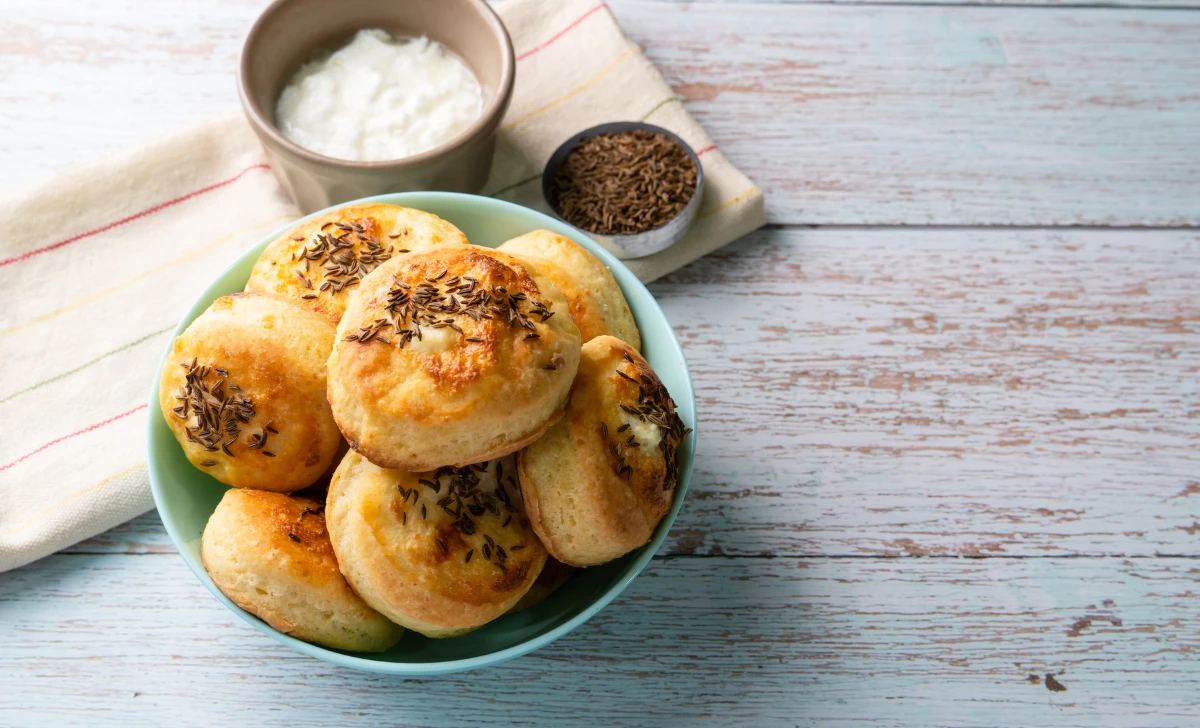

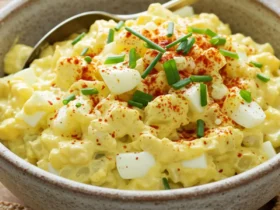
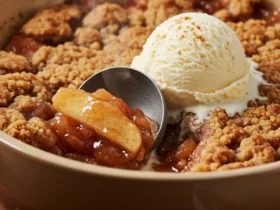
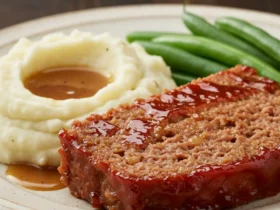
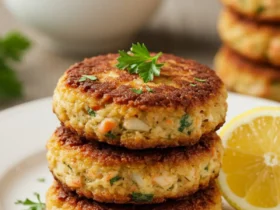
Leave a Review